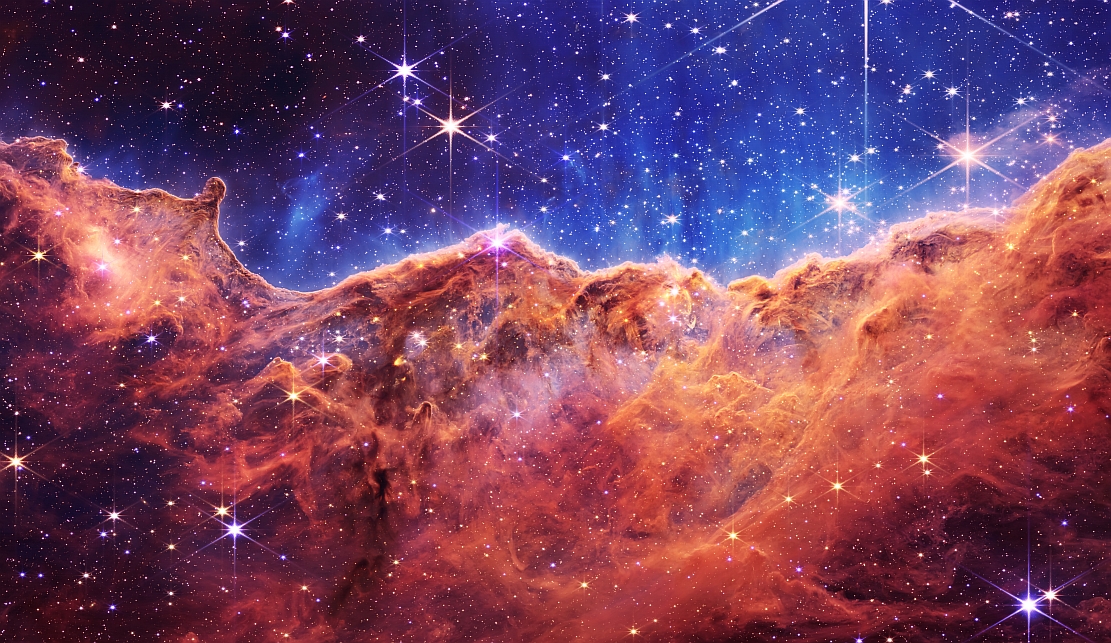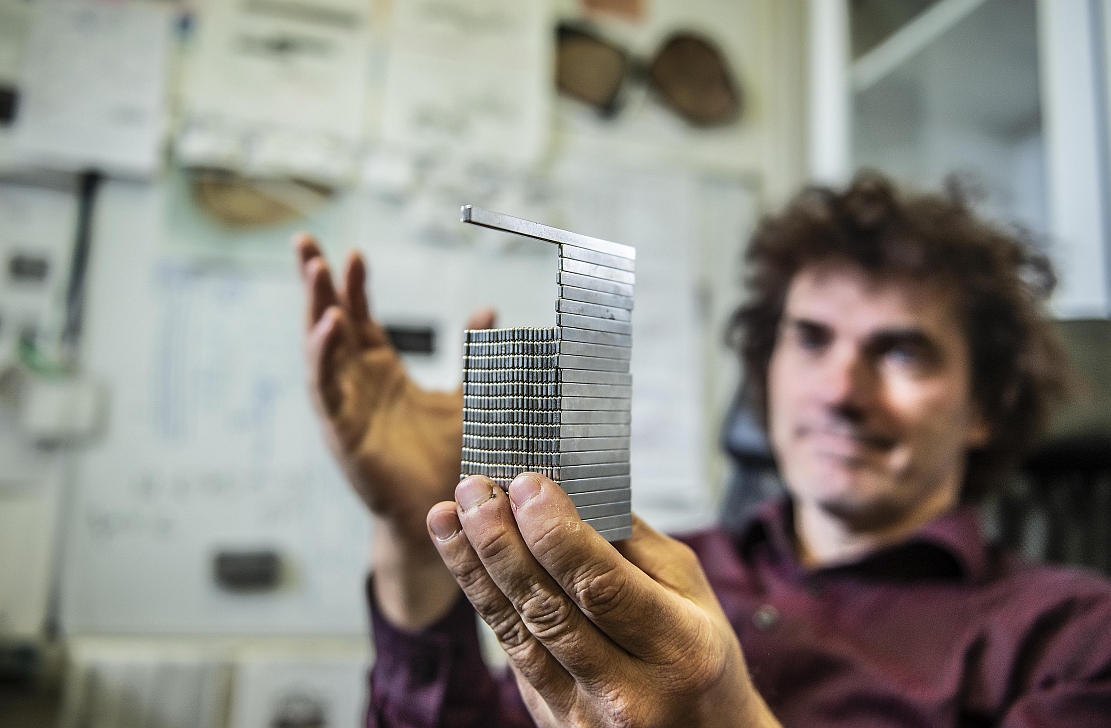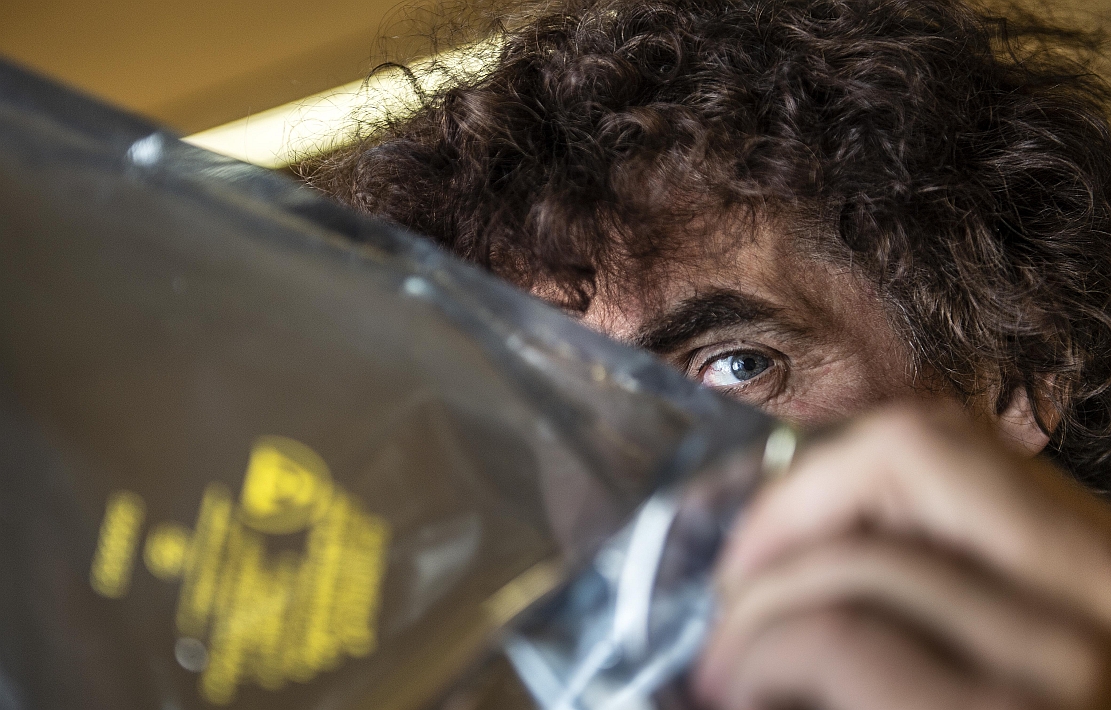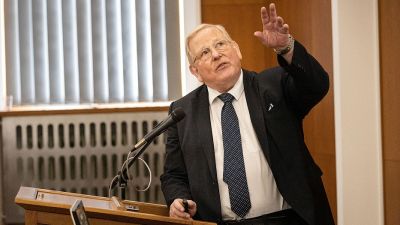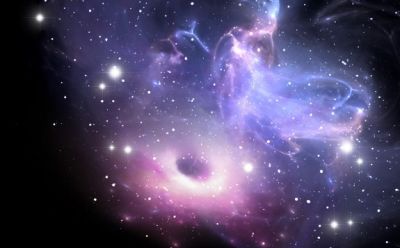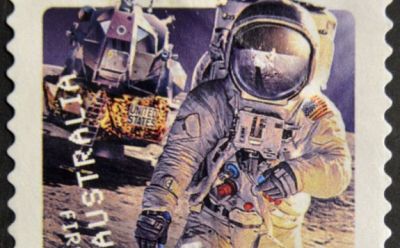A year-and-a-half since it was launched into the L2 Lagrange point, 1.5 million kilometres from Earth, NASA’s James Webb Space Telescope has proven to be an overwhelming success. Designed to help scientists study the formation of galaxies in the early universe, the infrared observatory stunned viewers from the get-go with images of unparalleled precision. It revealed galaxies only a few hundred million years younger than the very universe itself. Space.com surmised succinctly on the first anniversary of the launch that the telescope had “blown astronomers away”.
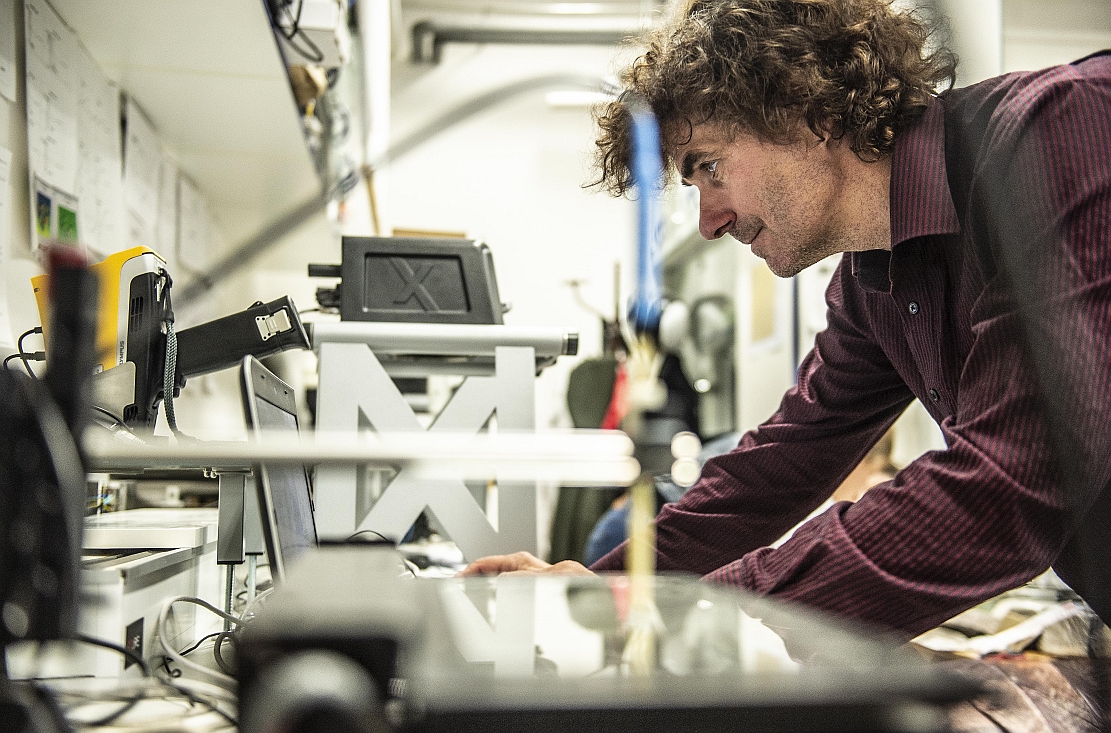
Geophysicist Günther Kletetschka, who worked on the JWST, runs a test at his office at the Faculty of Science at Charles University.
The development of the JWST, as the observatory is called for short, was led by NASA and took some two decades – involving the work of engineers, scientists, and technicians from dozens of countries around the world. One scientist who made a major contribution was Charles University’s Günther Kletetschka, a geophysicist and expert on magnetism at Charles University’s Faculty of Science.
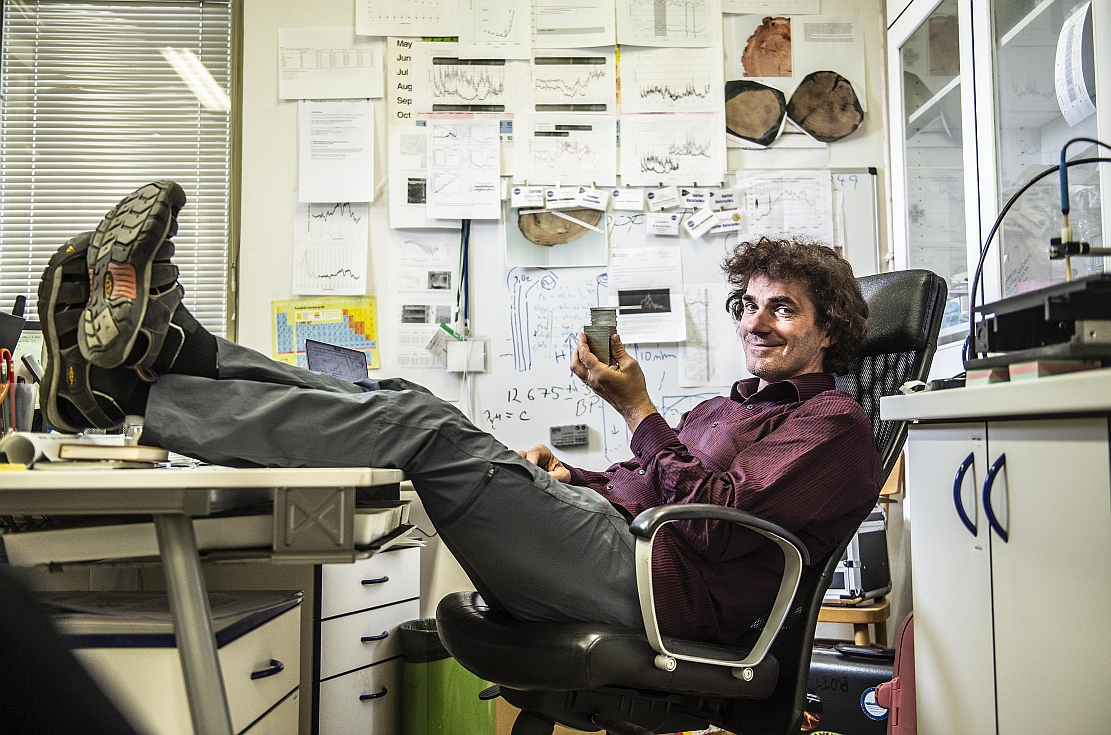
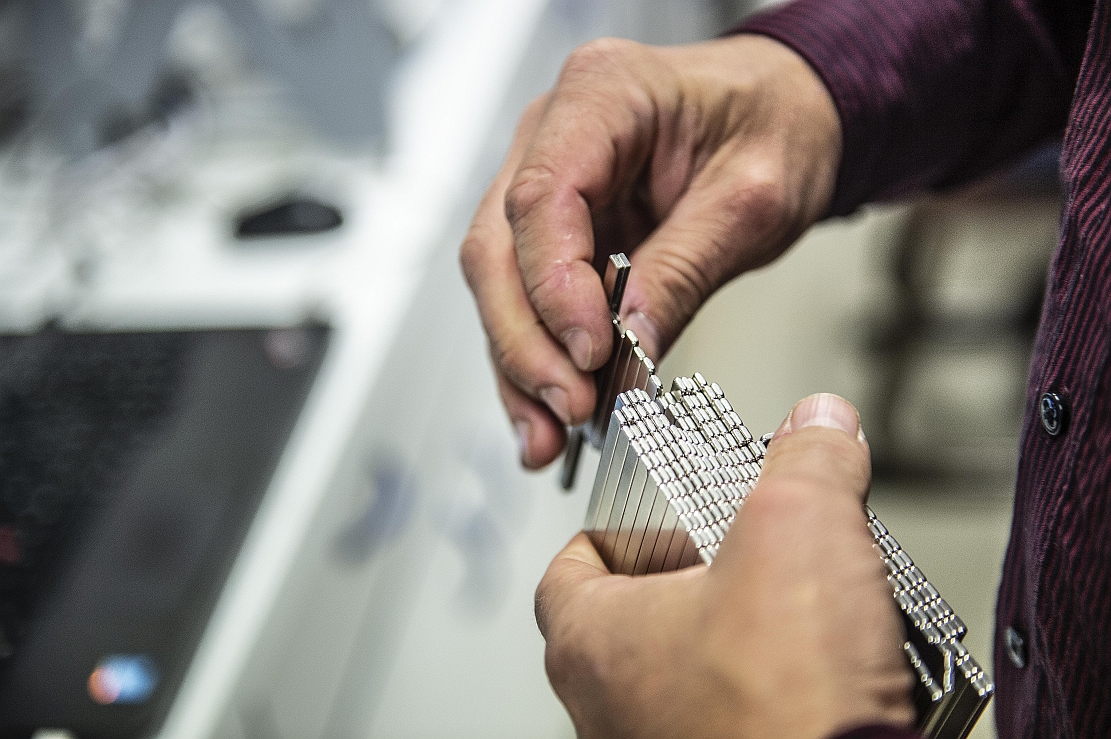
Kletetschka poses for Forum photographer Vladimír Šigut in the autumn of 2022. Right: a collection of dipole magnets stored at his Prague office.
Striking images, less clutter
His international team developed an elegant system: a magnetic arm for use with one of the telescope’s four major instruments, the Near InfraRed Spectrograph (NIRSpec, designed to open and close 248,000 microshutters or tiny doors just 100 by 200 microns in parameter (the width of a few human hairs) to transmit or block light. Using the microshutters, the telescope is able to capture the spectra of 100 individual objects in space - all at the same time. The technological achievement makes possible high-resolution images sans “image clutter from other objects”, as the University of Alaska Fairbanks noted (where Associate Professor Kletetschka is also employed).
Forum caught up with the researcher to learn more about the team’s contribution and the role it was playing now.
“We worked on the problem from around 2002 – 2008. That was when we arrived at the final product. But there were still many parts of the telescope the telescope that required completion, so it was still a while before the JWST was ready for launch in December 2021. I had three specific grants that funded my research in this area but once we solved the task, I moved on to other projects. The purpose was to make the best possible system of arrays for the telescope.”
‘Open and closed’ case
Kletetschka describes each microshutter as a tiny door or shoebox lid that is either flipped open by a small magnetic arm or flipped shut releasing the voltage holding the shutters open..
“It’s a tiny door in the order of 50,000 per array of which there are four, so some 200,000 in all. Once closed, light cannot go in, but you use a magnet to sweep a magnetic field to create magnetic torque. From the perspective of the microshutter there is a magnetic field rotation and it not the magnetic pull of the magnet per se but the magnetic torque created which results in the opening of the door.”
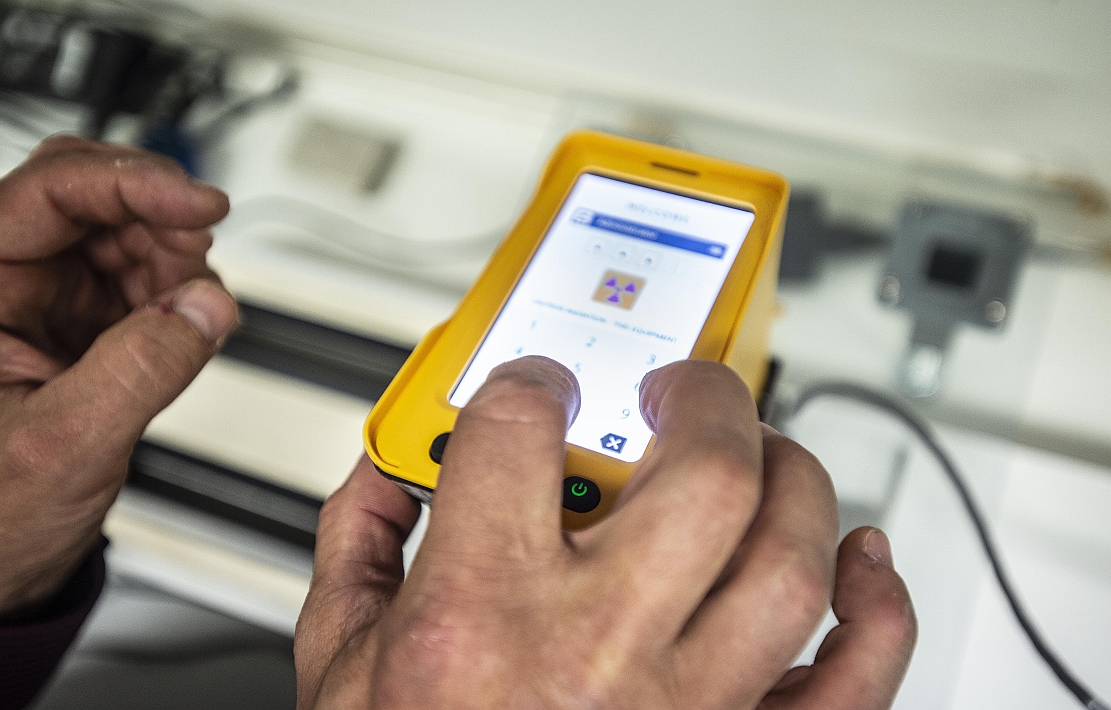
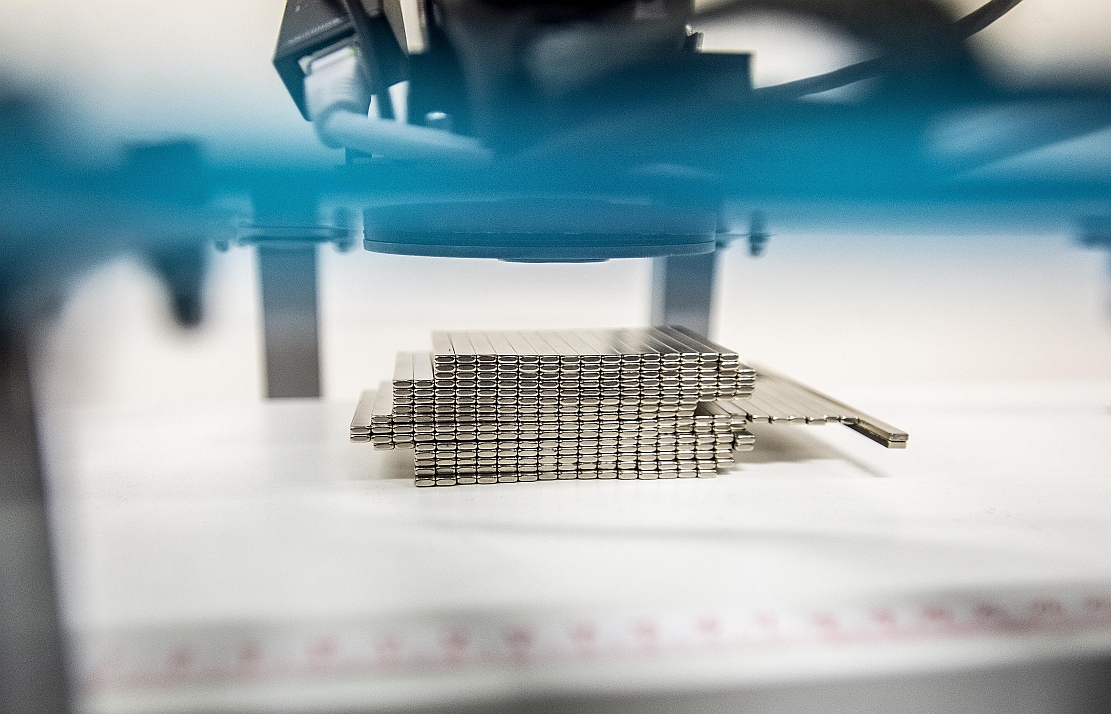
Testing, testing... testing. The backbone of any scientific endeavor.
In his office in the basement of the Faculty of Science at Prague’s Albertov, which gives the impression of organisation and clutter all at the same time, complete with his collection of past NASA nametags, Kletetschka showed us the original dipole magnets he employed to create the rotating magnetic fields. NASA had originally had an engineer produce a hexapole magnet as a precursor to the system, which the scientist says were six dipoles glued together.
“They had to be very close to the shutters, too close, which proved impractical. The distance of the magnet was just 0.2 mm and that led to crashing often into the shutters that damaged months of work of a great many people. And I realised it was not the strength of the magnet but the torque that was important. Once we focused on that, it became possible to locate the magnet not 0.2 mm but a full 2.0 millimetres away. It appeared this would work and that things were on the right track.
“What we also realised was that once the microshutter opens there is a wall in the shoebox that is electrostatically charged, and this opposing charge makes the box stay open. The problem began when the dipole magnet returned to ‘parking’ position, the magnetic field was so strong that the box remained partly open. So we needed the magnetic field to be swept away much faster and the answer was to opt for a quadrupole magnet. Once we made that, everything worked: open, closed, and no impact in park position. And that is what is on the JWST now.”
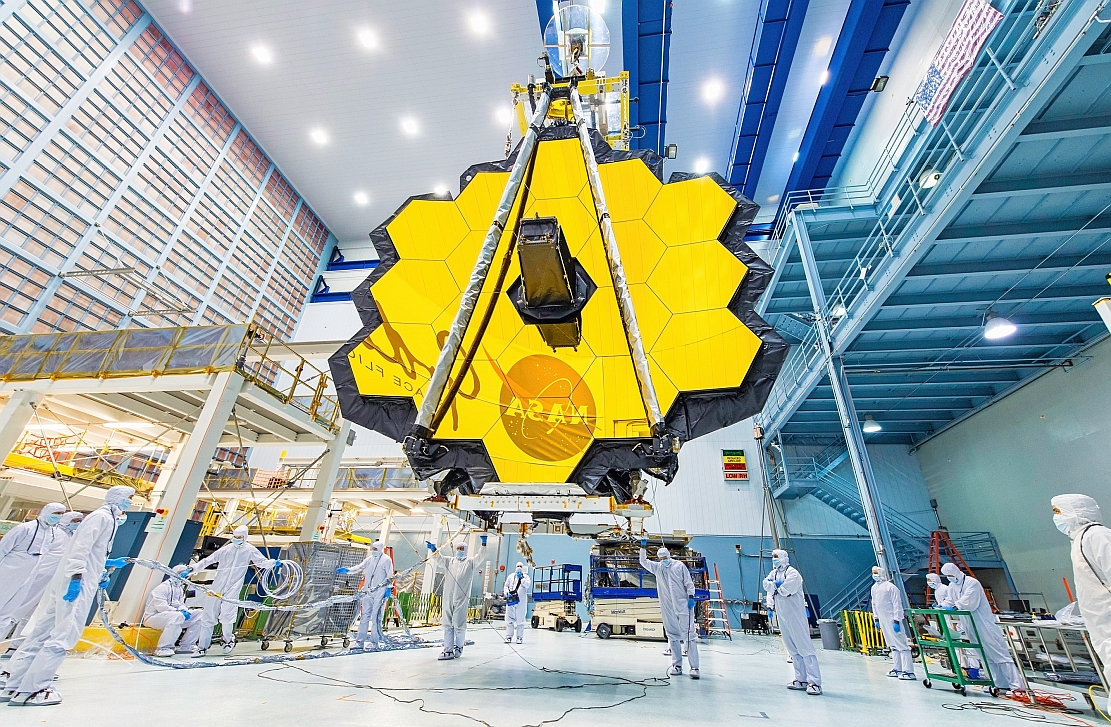
The James Webb Space Telescope, or JWST, when it was still earthbound. It was launched into space in December 2021.
Fatigue, radiation, bowing
As is the case in most any scientific endeavour, one problem solved led to new stages of testing and new questions that needed answers before the project could take another step nearer to completion. Testing the microshutters, (over and over, think those old IKEA furniture displays) revealed other shortcomings: material fatigue. Günther Kletetschka again:
“We needed to see how long it was before the hinge on the shutter, made of silicon oxide, failed. We tested the hinges over and over and then saw, after say ten thousand tries that a hinge broke. There is material fatigue. So you can’t have a hole there so we had to create a little fix that could be done even in outer space. The hinge is attached in two places and you can break one or the other and the door became slightly crooked or stuck. So you have to have a system on board that can re-glue it. Don’t forget that each microshutter is 100 x 200 microns. If a fly takes a tiny poop on the window, that’s about the same size.” (laughs)
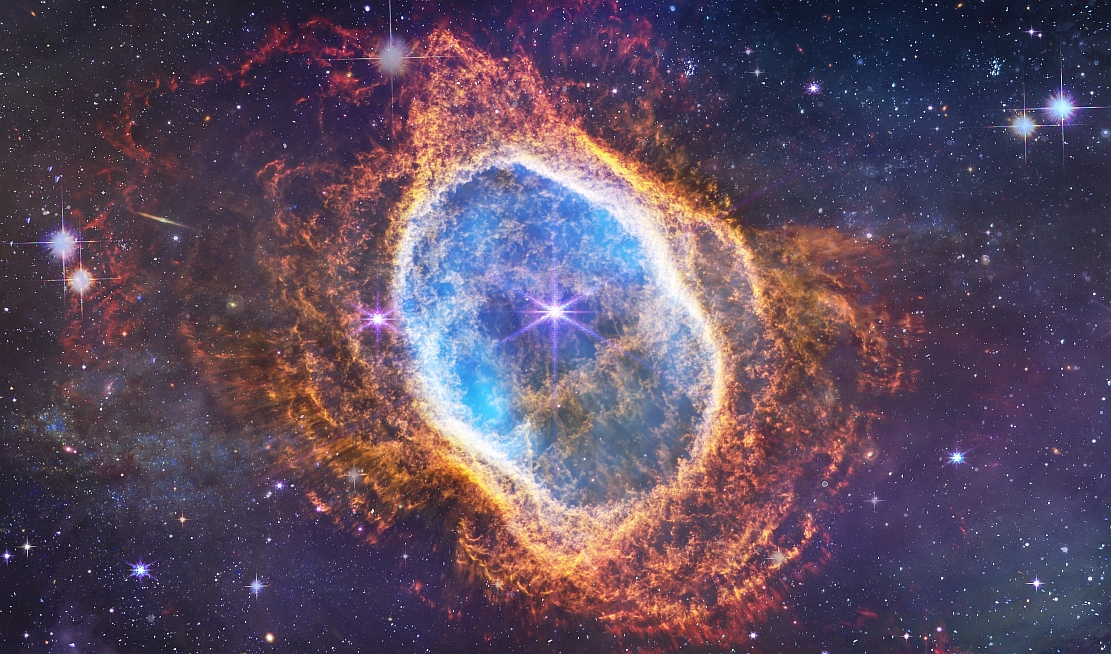
Southern Ring Nebula. Space collage from JWST. Elementds of this image furnished by NASA. SHutterstock.
It is also one thing to consider conditions on Earth and another entirely in space.
“It is a good question and there are several angles to deal with it. We already talked about the magnet We tested all kinds of materials and landed on this rare-earth element called neodymium. We purchased already made magnets from a compressed powder of neodymium, iron and boron,. So we started testing it and then thought, for now we are testing this at room temperature. But is it going to be room temperature out in space, maybe not?! Maybe it will be a little lower, like around 50 Kelvin, which is around -223 Celsius! So it’s cold.
“So we ran tests where we kept lowering the temperature. Once we reached about 80 Kelvin the magnet began to fail and lose strength. And everyone began to panic: How do we solve it?! But next to neodymium on the Periodic Table you have praseodymium so we repeated the process and redid the magnet using that and we tested it and it actually gained in strength the lower the temperature got. So the magnet on the JWST is praseodymium, boron, and iron.
“The next thing was testing in a vacuum, there has to be protection against radiation, because you can have ions that are speeding out in space causing what is called ‘reconnection’. Magnetic fields in space, in galaxies and the Sun, can see ions of hydrogen or helium speeding through space at a fraction of the speed of light and they can do a lot of damage, so we had to take steps against that.
“We also examined the microshutters as such at extremely low temperatures, and at low temperatures there was a tendency for them to become bow shaped. Because they are not just one material, they are silicon oxide and another glued on top: this conductor, aluminium, that is glued and sandwiched on, and the materials contracted in different ways. So we had to work out that issue as well because it was clear it would be operating in extreme cold.
“We tested the arrays in the lab at the Goddard Space Center in Maryland. Again and again to see how the microshutter system and the material responded. We created more than a hundred of them in order to choose the best ones in which the microshutters opened and closed without the slightest problem. We even tested the arrays under water to see how the system would react.”
Over all, the team was quite small - Kletetschka along with Tomoko Adachi and Vilem Mikula (the latter also from CU) on board. But he says he liked the nature of the work.
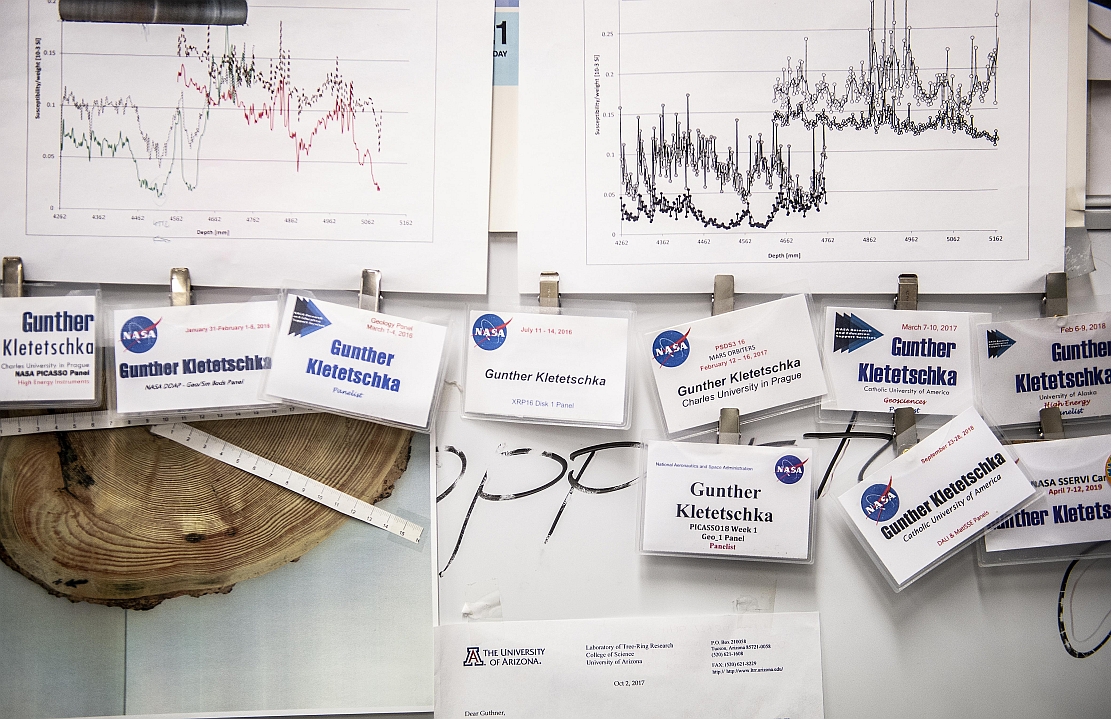
Kletetschka's well-earned collection of NASA nametags hang alongside charts and other items on his bastement office wall.
There is always a solution, maybe just not the one you think
As is probably clear by now, over that five-year period there were plenty of moments when the scientists hit snags or hurdles, sometimes leaving Kletetschka wondering whether their entire approach would need to be scrapped and the drawing board taken out.
“There were problems we uncovered and at certain point yes, you wonder whether you are following the right direction. There were moments I questioned whether magnets were a good idea at all! As in, magnets? What was I thinking! But even setbacks or failures are good for something. At one point, we began to consider any entirely different approach not using magnets at all. We began to run electrostatic tests where we saw if we used a certain frequency that we could wobble the microshutters to open and close and saw results. There is now testing using resonance-related electrostatic fields in a new generation of microshutters. It is about approaching problems in a new way and that may result now in a different set of products.”
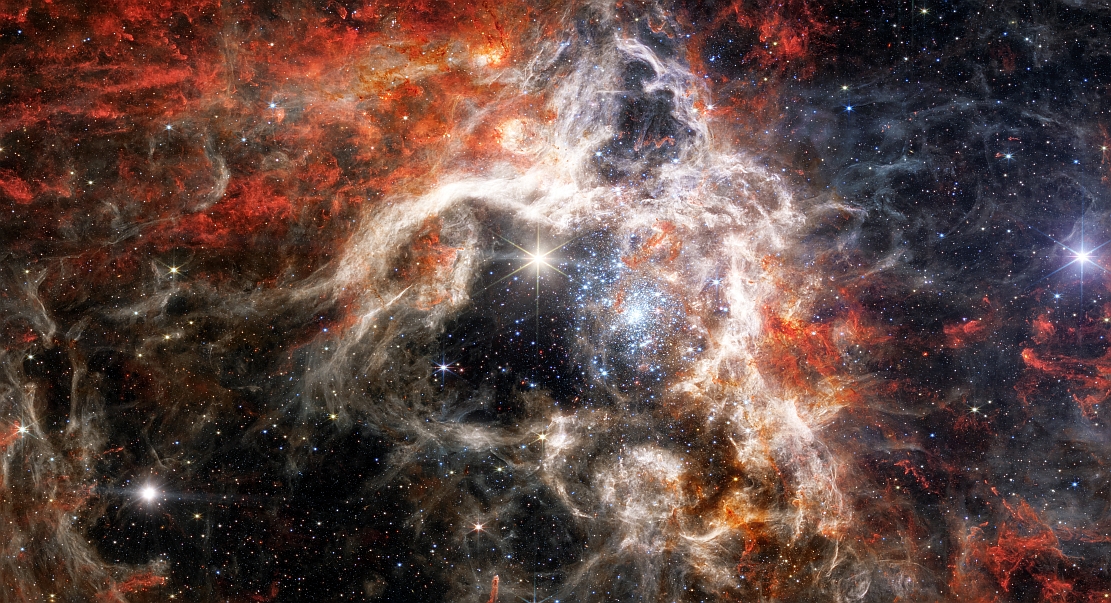
The Tarantula Nebula, a star-forming region in deep space.
The wondrous James Webb Space Telescope
Back to the JWST, NASA prefers to call the Webb a successor rather than replacement for the famous Hubble telescope that is still in use. The JWST, with a larger mirror, is able to peer further back across time than any instrument before it. One reason the data already gathered about early galaxies has been so remarkable, including a discovery announced in February 2023 of six massive galaxies not thought to be possible at that early stage of the Universe’s existence ie. known as the Dark Ages. The new data may test everything scientists thought they knew about the creation of galaxies before, as evidenced in a brief interview on CNN with American astrophysicist and science communicator Neil deGrasse Tyson.
He told CNN’s Don Lemon that these kinds of discoveries were "exactly what the JWST had been designed to do" and that we “shouldn’t be surprised to be surprised.”
From the moment it went into operation the JWST has gone from strength to strength with astounding images from around the universe: the Pillars of Creation dust clouds which are part of the Eagle Nebula, the Taurus star-forming region, Pandora’s cluster 3.5 billion light years away, the auroras at Jupiter’s poles, the dwarf galaxy Wolf-Lunmark-Melotte. It is already more than apparent the JWST will continue to redefine how we see the universe with crisp sharpness and spellbinding clarity for many years to come. Kletetschka is understandably proud of his contribution although his focus has since moved to geology undersea.
“Suddenly you can see through all the space dust and fog. It’s like suddenly having X-ray vision, that aspect of uncloaking this unknown world was the most striking aspect for me. You can aim at really unknown parts of the universe and see all these different galaxies that generally very far away. And their red-shift tells you how. And the device allows you to block off sections you are examining for further analysis. There are still a lot of mysteries to be uncovered.”
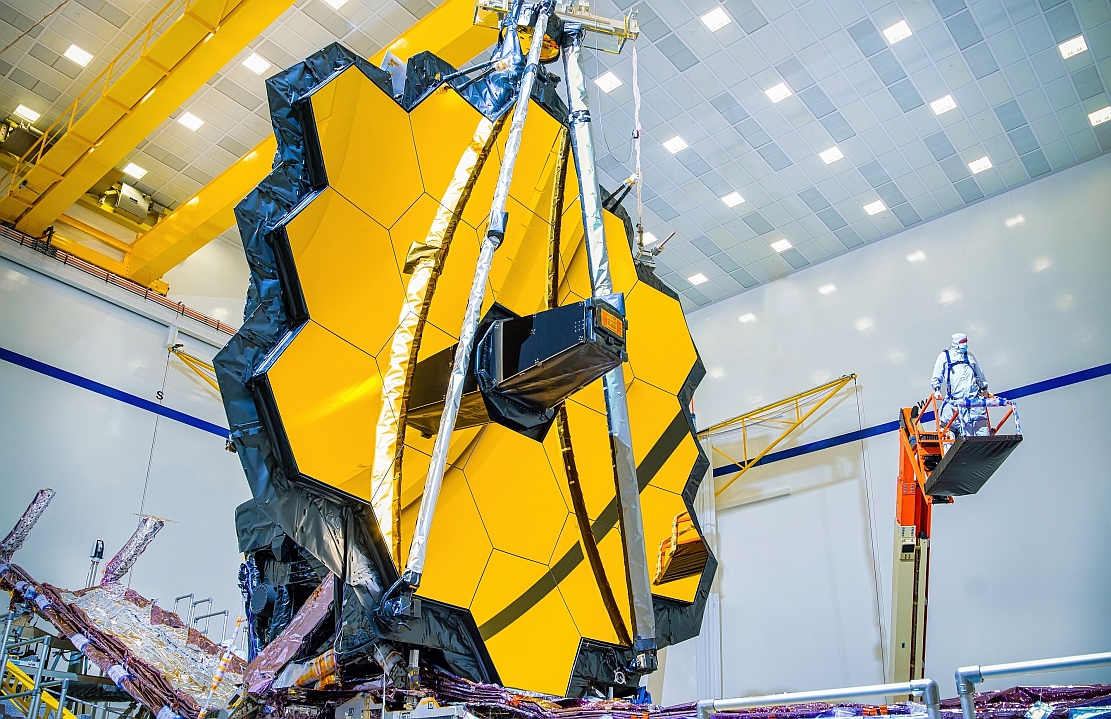
A feat of incredible dedication and scientific ingenuity that is changing how we view the Universe: the JWST.
Immortality
Regarding inventions and regarding NASA’s rigorous approach, Günther Kletetschka says space technology often exceed expectations and devices and instrumentation outlive regular timelines and continue to deliver long after anyone expected. The Mars Rover and its helicopter Ginny or Voyager 1 and 2 are cases in point. Voyager 1 and 2 remain the only manmade objects to leave the Heliosphere and reach interstellar space, yet are still transmitting to Earth from 23 billion kilometers away. Voyager I left Earth in 1977! When it comes to space and human ingenuity there are plenty of reasons for optimism and, excuse the pun, there are plenty of stars in the sky. As it happens, Kletetschka has a personal connection, to a degree, to those famed devices.
“Norman Ness, the PI on Voyager 1 and 2, was my mentor. He was from Delaware University and there was an institute there where was looking for funding for half a year. At the time I was working on Mars missions and I got to work closely with him. And I always though how cool it was to design and send instruments and send them out into space. And once you send them out you basically make them immortal.
“Yes, there is radiation and some of the instruments stop working, but still: it’s in space, there is no weathering, it will still be there in a million years, very much as it is now. That’s so different from everything down here. If you look at that, at the computer on my desk, it will look different in 10 years. People want to guarantee the objects in space will work for 10 years but the fact is so many are done so carefully, so uniquely, they will operate far longer than that. More mileage than expected, that little extra, that’s the foam on the beer.”
| Associate Professor Günther Kletetschka |
| Günther Kletetschka studied geophysics at the Faculty of Mathematics and Physics of Charles University in Prague and geology and geophysics at the University of Minnesota in the United States. He worked at NASA for thirteen years and played a key role in the development of the magnetic microshutter system on the James Webb Space Telescope or JWST. His research interests include the magnetic properties of impact craters, ice and living organisms at the Faculty of Science of Charles University, the Geological Institute of the Czech Academy of Sciences and the Geophysical Institute at the University of Alaska Fairbanks. He also works on paleomagnetism, has researched the evolution of Mars, and looked at problems and applications of carbon nanotubes. Last autumn, he was involved in undersea research. |


